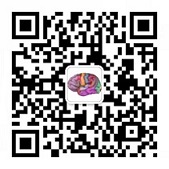2019年Lüders癫痫发作分类
1、先兆(Auras)
- 躯体感觉先兆(somatosensory aura)
- 视觉先兆(visual aura)发作性失明(Ictal blindness)
- 嗅觉先兆(olfactory aura)
- 味觉先兆(gustatory aura)
- 听觉先兆(auditory aura)
- 精神先兆(psychic aura)
- 情感先兆(Affective aura)
- 愉快感先兆(Pleasure aura)
- 狂喜先兆(Ecstasy aura)
- 宗教相关的先兆(Religious aura)
- 性相关先兆(Sexual aura)
- 不愉快感先兆(Unpleasant aura)
- 愤怒的先兆(Anger aura)
- 抑郁/悲伤先兆(Depression/Sadness aura)
- 尴尬先兆(Embarrassment aura)
- 恐惧/恐慌先兆(Fear/Panic aura)
- 罪恶感先兆(Guilt aura)
- 愉快感先兆(Pleasure aura)
- 认知先兆(Cognitive aura)
- 体验性先兆(Experiential aura)
- 熟悉感先兆(Familiarity aura)
- 已经见过的先兆(Déjà-vu aura)
- 从来没见过的先兆(Jamais-vu aura)
- 幻影先兆(illusionary aura)
- 听觉先兆(Auditory aura)
- 躯体先兆(Body aura)
- 时间先兆(Time aura)
- 视觉先兆(Visual aura)
- 情感先兆(Affective aura)
- 自主神经先兆(autonomic aura)
- 腹部先兆(Abdominal aura)
- 呛气先兆(Choking aura)
- 发汗先兆(Diaphoretic aura)
- 烦渴先兆(Dipsosic aura)
- 毛发运动性先兆(Pilomotor aura)
- 流涎先兆(Sialorrheic aura)
- 心动过速先兆(Tachycardic aura)
- 泌尿系统先兆(Urinary aura)
- 血管舒缩先兆(Vasomotor aura)
- 前庭先兆(Vestibular aura)
2、自主神经性发作(Autonomic seizures)
- 心动过缓发作(Bradycardic seizure)
- 呕吐发作(Emetic seizure)
- 涎腺发作(Sialorrheic seizure)
- 心动过速发作(Tachycardic seizure)
- 泌尿系统相关发作(Urinary seizure)
- 腹型发作(Abdominal seizure)
- 不对称性发作(Anisocoric seizure)
- 大便失禁发作(Fecal incontinence seizure)
- 虹膜痉挛性发作(Hippus seizure)
- 多汗性发作(Hyperhydrotic seizure)
- 高血压性发作(Hypertensive seizure)
- 催泪性发作(Lacrimatory seizure)
- 毛发运动性发作(Pilomotor seizure)
- 性相关性发作(Sexual seizure)
- 血管舒缩性发作(Vasomotore seizure)
3、认知障碍性发作(Dyscognitive seizures)
- 遗忘性发作(Amnestic seizure)
- 失语性发作(Aphasic seizure)
- 运动不能性发作(Akinetic seizure)
- 愣神发作(Dialeptic seizure)(1998年时提出的一个术语,也有翻译为呆顿性发作、解离性发作或意识障碍性发作;主要是为了来区别失神发作(absences seizure),因为愣神发作只是单纯从症状学角度来讲,它既可以是全面性的失神发作也可以是其它局灶性的发作,只是强调有意识的改变)
4、运动性发作(Motor seizures)
- 简单运动性发作(Simple motor seizure)
- 阵挛发作(Clonic seizure)
- 癫痫性痉挛(Epileptic spasm)
- 肌阵挛发作(Myoclonic seizure)
- 眼球震颤发作(Nystagmoid seizure)
- 强直发作(Tonic seizure)
- 强直-阵挛发作(Tonic-clonic seizure)
- 偏转性发作(Versive seizure)
- 发音性发作(Vocalization seizure)
- 复杂运动性发作(Complex motor seizure)
- 肢体陌生感发作(Alien limb seizure)
- 自动症发作(Automotor seizure)
- 流泪性发作(Dacrystic seizure)
- 痴笑发作(Gelastic seizure)
- 过度运动发作(Hypermotor seizure)
- 情绪性过度运动发作(Emotional hypermotor seizure)
- 亲吻发作(Kissing seizure)
- 歌唱性发作(Singing seizure)
- 吐痰发作(Spitting seizure)
- 言语发作(Verbalization seizure)
5、特殊类型发作(Special seizures)
- 站立不能发作(Astatic seizure)
- 失张力发作(Atonic seizure)
- 中枢性呼吸暂停发作(Central apneic seizure)
- 恐惧面相发作(Fear facies seizure)
- 催眠性发作(Hypnopompic seizure)
- 少动性发作(Hypomotor seizure)
- 负性肌阵挛发作(Negative myoclonic seizure)
- 饮水性发作(Water drinking seizure)
6、无症状性脑电发作(Asymptomatic EEG seizure)
参考文献:

 简体中文
简体中文  English
English 